
In the afternoon we rented a small bus to take us to the old provincial capital Foliang and the Red Pagoda. From Jingdezhen historically having been part of Foliang, Foliang now belongs to Jingdezhen. The villages around Jingdezhen are becoming suburbs. The small gravel roads are getting a coat of tarmac. Everywhere are stacks of bricks that are to be made into modern houses. All of them as far as I can see are to be made in two stories along the main street. The bottom floor with and open facade to house a business or a workshop, the second, for living quarters.
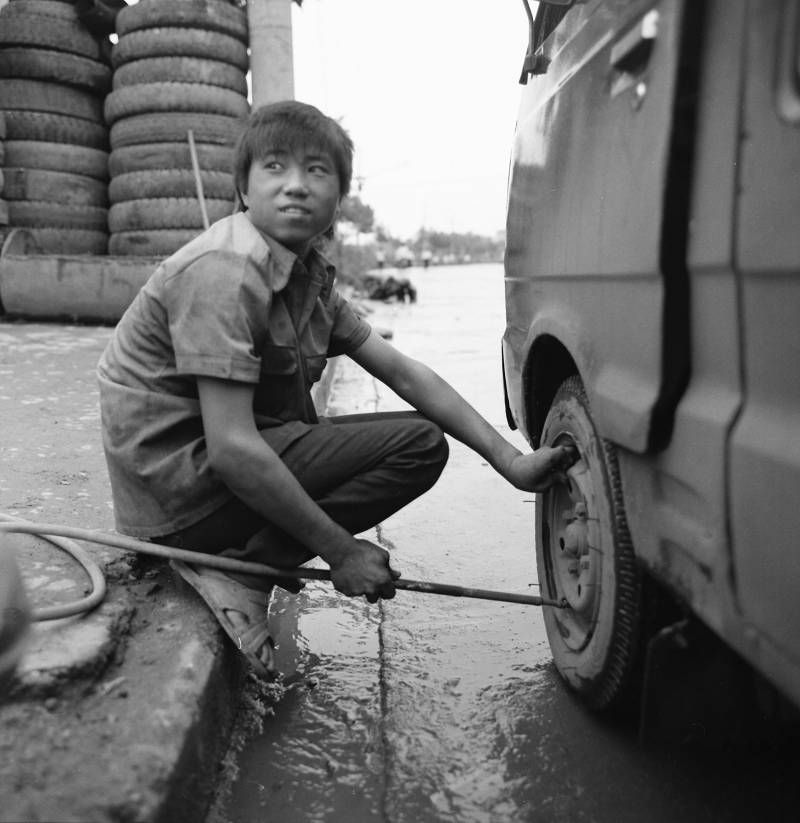
Our driver filling up air. During the ride we had a small mishap with a flat tire that was rather quickly taken care of.
The trip went along the south bank of the river. A modern bridge was under construction but not yet complete so we would need to take the ferry to the other side of the river.
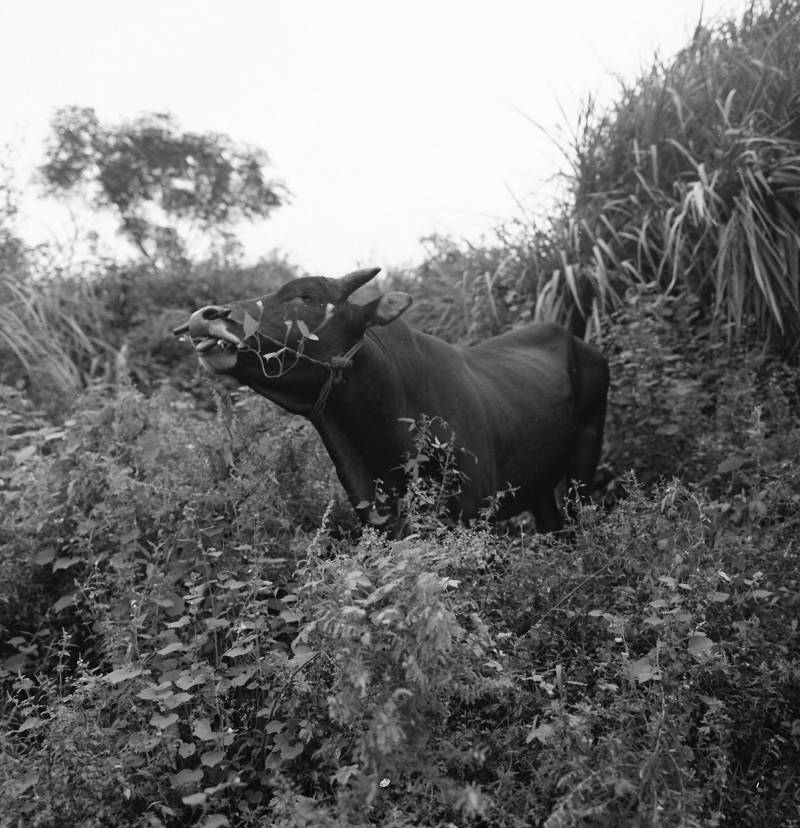
Moo
When we stopped at the river I was surprised by the presence of on the most peaceful animals on earth, a water buffalo grazefully dining on some leaf near the river. They are surprisingly large when you meet them eye to eye instead of as a motif in porcelain decorations. One of the forefathers of this one had most certainly modeled for one or several decorations that I could think of.
The ground from the riverbank all the way up to the aisles in the lawn surrounding the pagoda are strewn with porcelain shards. The oldest seems to be from Song and are of the Jingbai type. Otherwise, a uniform distribution, perhaps a somewhat slanted to the period around late Ming. No traces of any kiln waste. This was probably a trade and transshipment location.
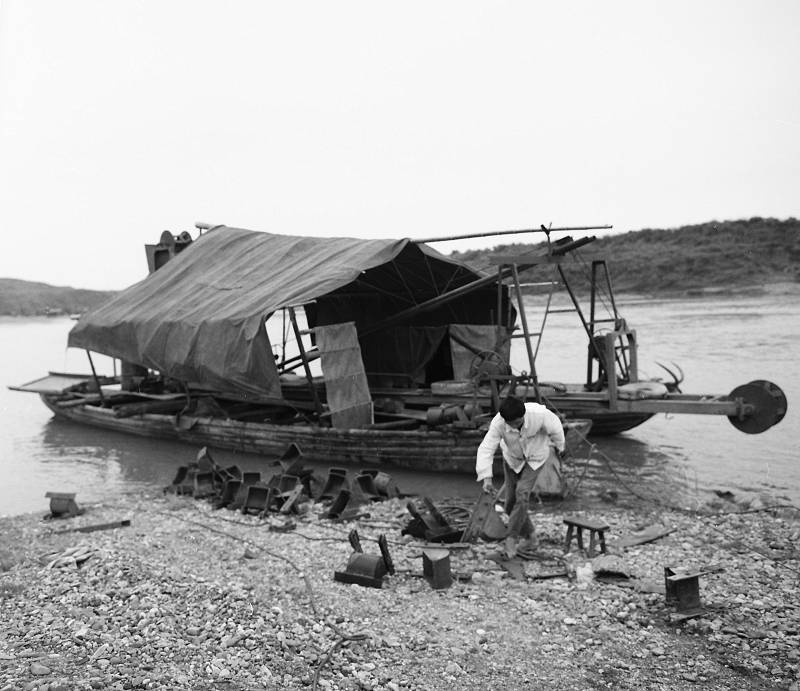
Dredging the river seemed to be a continuous process, ongoing everywhere. The gravel taken up seemed to be processed into roads, embankments, cement or maybe something else. Regardless of what we only saw a large deposit of gravel down at Jingdezhen. This we saw just near the ferry we would take to reach the other side.
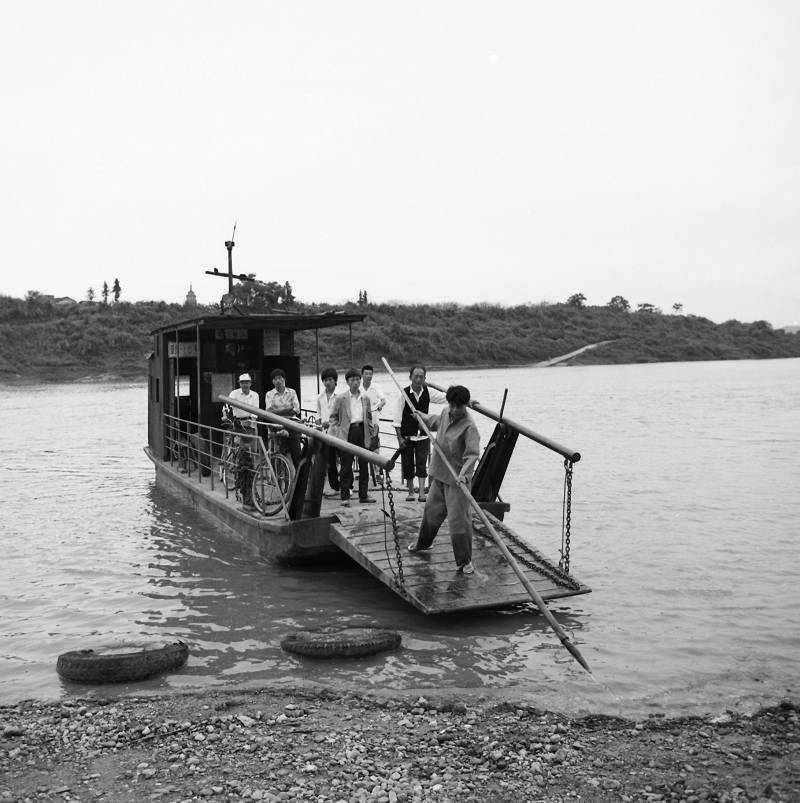
To cross the river we needed to go with the local ferry that charged a few fens for the the trip.
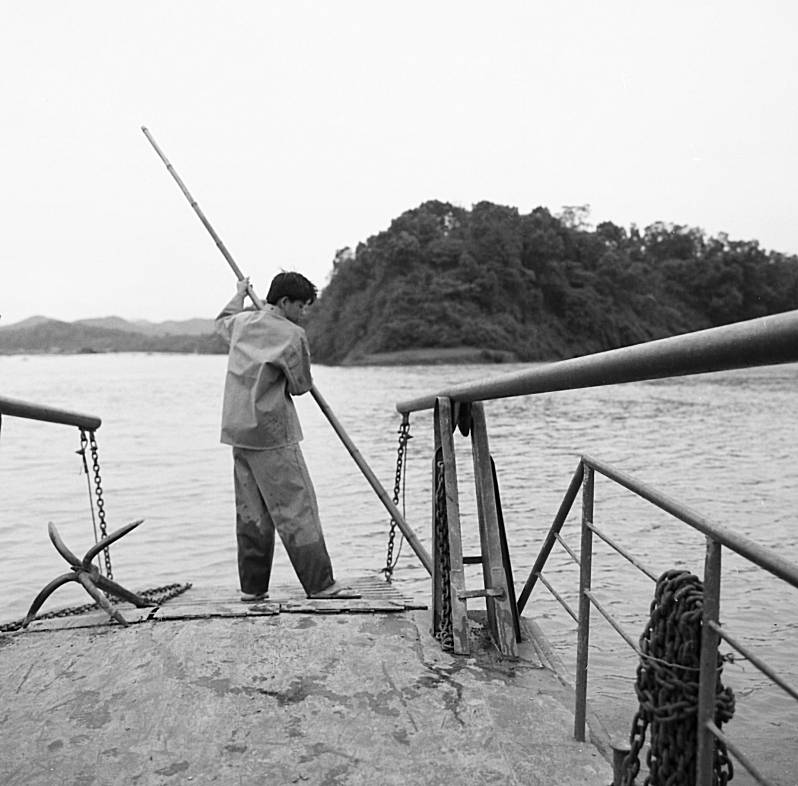
Turning around the ferry.
It was unfortunately too small for the taxi so we walked up to the pagoda on the other side. That way it was not really possible for us to visit the proper village but this was interesting enough for this time.

Red pagoda in the Foliang village
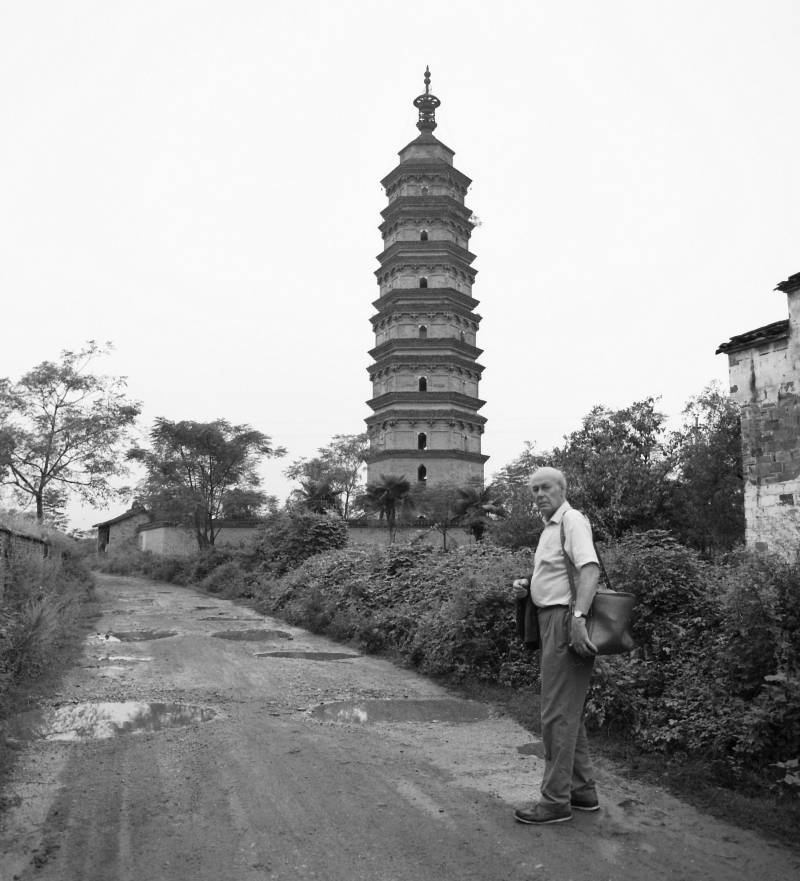
Erik Engel on the road to The red pagoda in Foliang. The pagoda was built in 961 and is 49 meters high.
Photo © Jan-Erik Nilsson, Foliang, Jiangxi province, China, 17 September 1992
During tonight's dinner the Chinese told that there was never any ceramic production in Foliang, especially because there were no raw materials. The town's specialty was timber floating. The timber was used among other things as joists in the buildings of Jingdezhen.